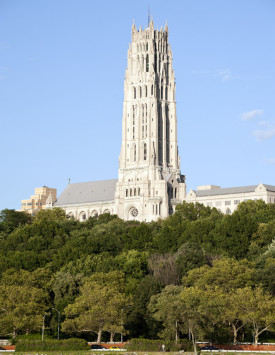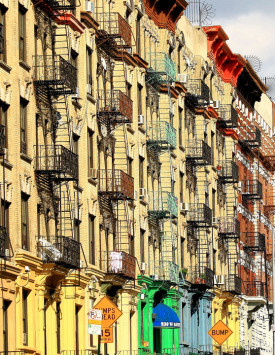Morningside Heights runs from Riverside Drive to Morningside Park, from 110th Street and 125th Streets and is a cross between the Upper West Side and Harlem, boasting some of the city’s most impressive architecture and landmarks: Turn-of-the-century apartment buildings (many with grand marble lobbies), the Episcopal Cathedral of Saint John the Divine and the Riverside Church. Claremont Avenue, which runs north for several blocks from 116th Street, is one of the most attractive residential streets in the City. The presence of Columbia University, the area’s largest property owner, dominates, and Broadway is the main thoroughfare, bustling with businesses and people.


Hamilton Heights runs from from West 125th Street to West 155th Street, from Riverside Drive to St. Nicholas and Edgecombe Avenues and derives its name from Founding Father Alexander Hamilton, who lived the last two years of his life in the area when it was still largely farmland. Specifically, he lived in what is now known as Hamilton Grange National Monument. Hamilton Heights is best known for “Strivers’ Row” – a block of the city’s most-desired townhouses that share rear courtyards. Parts of Strivers’ Row were designed by the noted architecture firm of McKim, Mead and White, and in addition to the rear gardens, many of the townhouses have lovely staircases, fireplaces, pocket doors, and moldings. Even in the surrounding area, the conjunction of great subway access (the train stops at 135th and 145th streets) and beautiful row houses makes Hamilton Heights a lovely place to live.
Washington Heights runs between 155th Street to Dyckman Street, from the East River to the Hudson River. Here, you’ll find five- and six-story prewar apartment buildings, row houses, and Art-Deco co-ops where three-bedroom, three-bathroom apartments are not unusual. The best known cultural site and tourist attraction in Washington Heights is The Cloisters in Fort Tryon Park at the northern end of the neighborhood, with spectacular views across the Hudson to the New Jersey Palisades. This branch of the Metropolitan Museum of Art is devoted to Medieval art and culture, and is located in a medieval-style building, portions of which were purchased in Europe, brought to the United States, and reassembled. For a split second, you almost forget you’re in the Big Apple as you become amazed by the tranquility of the place.



